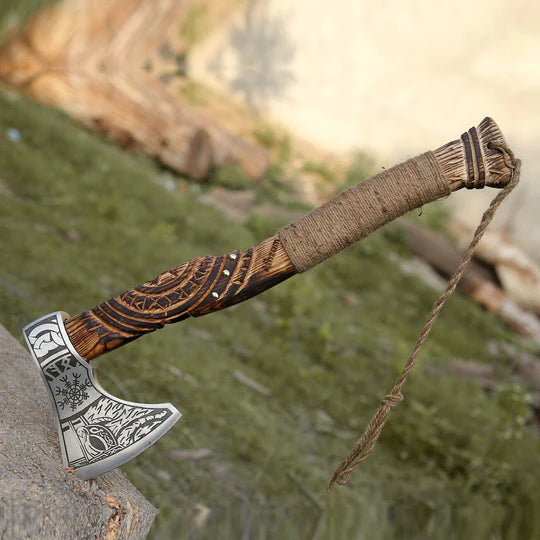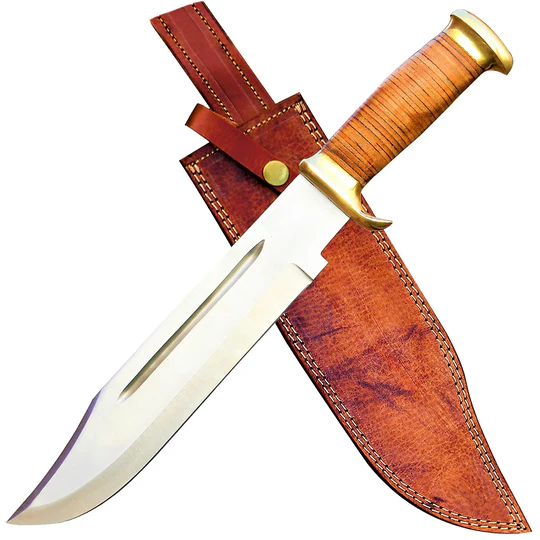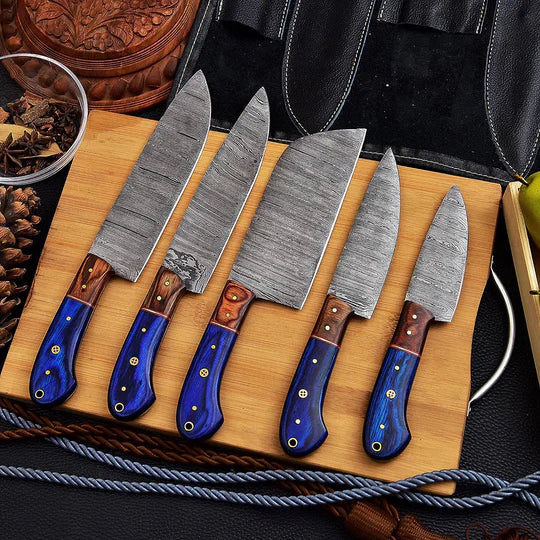Introduction
The
Viking axe stands as an iconic symbol of the Norse warriors who roamed the seas and conquered lands during the Viking Age. Beyond its menacing appearance, the Viking axe holds a rich history and unparalleled power on the battlefield. In this article, we delve into the origins, evolution, and significance of the Viking axe, exploring its cultural impact and formidable capabilities.
Origins and Evolution:
The Viking axe traces its roots back to the early Iron Age, where axes were vital tools for farming, woodworking, and combatAs Viking society evolved, so did the design of the axe. The Viking Age, spanning from the late 8th to the 11th century, saw the emergence of the distinct Norse battle axe Viking axes were typically single-handed weapons, featuring a wide, crescent-shaped blade attached to a sturdy wooden haft These axes varied in size and design, with some crafted for slashing and cutting, while others were optimized for piercing armor or delivering devastating blows.
Types of Viking Axes
1. Battle Axe:
Designed for warfare, the Viking battle axe was a fearsome weapon capable of cleaving through armor and bone with ease It featured a heavy, broad blade with a sharp edge on one side and often a spike or protrusion on the opposite side for puncturing armorThe haft of the battle axe varied in length, providing warriors with options for close-quarters combat or throwing.
2. Dane Axe:
Also known as a "long axe" or "great axe the Dane axe was a two-handed weapon wielded by elite Viking warriors known as huscarls With its long haft and massive blade, the Dane axe delivered devastating blows capable of shattering shields and splitting skulls Despite its size, the Dane axe was surprisingly agile in the hands of skilled fighters, allowing for swift and precise strikes.
3. Bearded Axe:
Characterized by its distinctive "beard," or extended lower blade, the bearded axe offered versatility in both combat and utility tasksThe curved design of the beard provided additional leverage for hooking and pulling opponents' weapons or shields Bearded axes were favored by Viking raiders for their ability to inflict grievous wounds in close combat.
Significance and Cultural Impact:
The Viking axe was more than just a tool of war; it was a symbol of status, strength, and courage Axes played a central role in Norse mythology and religious rituals, with legends of mighty gods wielding enchanted axes in battleThe sight of Viking warriors brandishing their axes struck fear into the hearts of their enemies, earning them a reputation as fierce and relentless fighters The legacy of the Viking axe lives on in modern culture, inspiring countless depictions in literature, art, and entertainment, cementing its place as an enduring symbol of Norse valor and martial prowess.
Conclusion:
The Viking axe stands as a testament to the ingenuity and ferocity of the Norse warriors who wielded it. From humble beginnings as a tool of the farm to a weapon of conquest and legend, the
Viking axe has left an indelible mark on history. By exploring its origins, evolution, and cultural significance, we gain a deeper appreciation for the enduring power and legacy of this iconic weapon.








